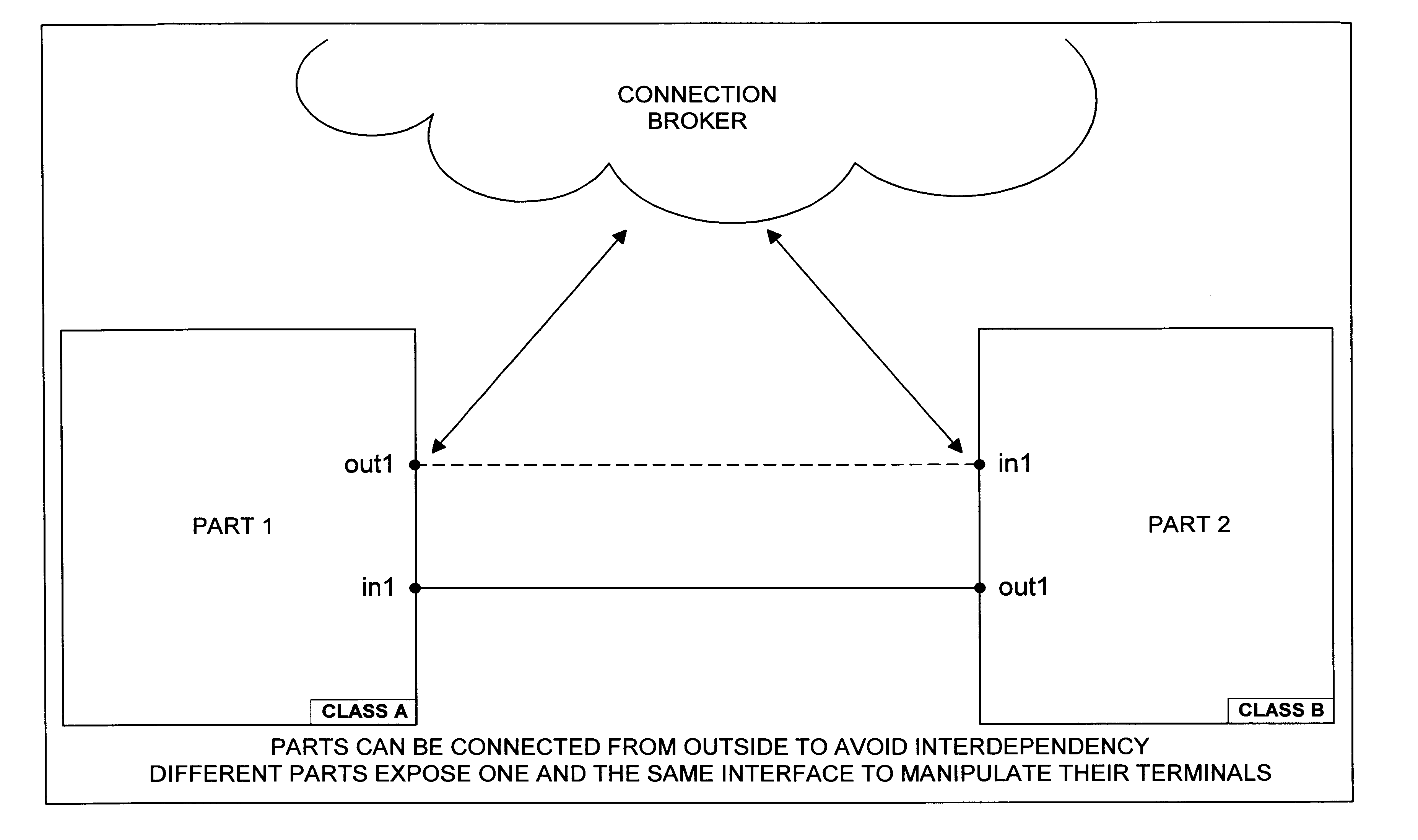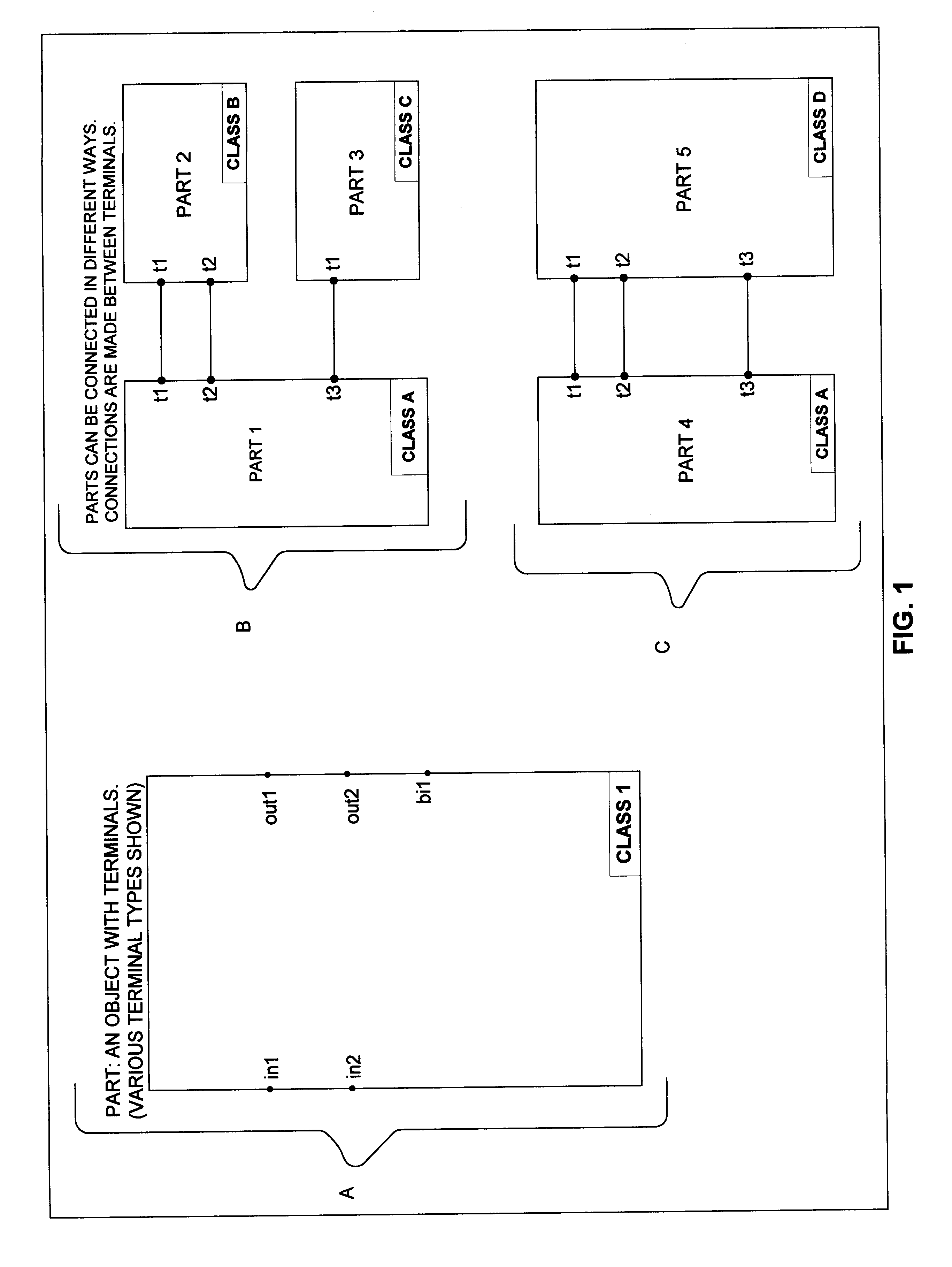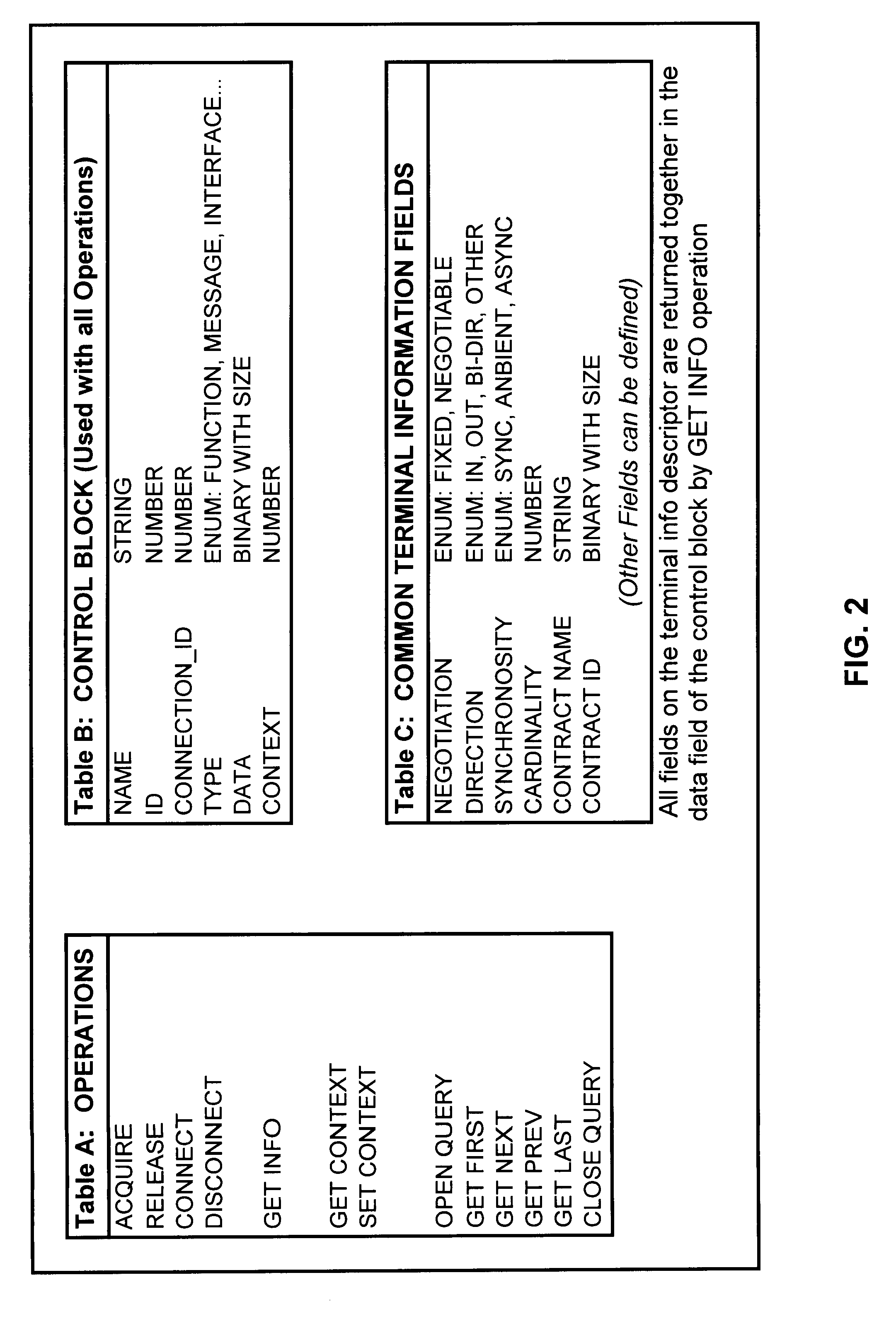Method and system for constructing software components and systems as assemblies of independent parts
a software component and system technology, applied in the field of object-oriented software engineering, can solve the problems of difficult interface between third-party components and the environment, slow progress in object composition, and limited use of object-based systems in real-world commercial software development, and achieve the effects of reducing the number of components
- Summary
- Abstract
- Description
- Claims
- Application Information
AI Technical Summary
Benefits of technology
Problems solved by technology
Method used
Image
Examples
Embodiment Construction
Glossary
The following definitions will assist the reader in comprehending the enclosed description of a preferred embodiment of the present invention. All of the following definitions are presented as they apply in the context of the present invention.
Adapter
a part which converts one interface, logical connection contract and / or physical connection mechanism to another. Adapters are used to establish connections between parts that cannot be connected directly because of incompatibilities.
an iternative name or path representing a part, terminal or property. Aliases are used primarily to provide alternative identification of an entity, usually encapsulating the exact structure of the original name or path.
a composite object most of the functionality of which is provided by a contained structure of interconnected parts. In many cases assemblies can be instantiated by descriptor and do not require specific program code.
Bind
an operation of resolving a name of an entity to a ...
PUM
 Login to View More
Login to View More Abstract
Description
Claims
Application Information
 Login to View More
Login to View More - R&D
- Intellectual Property
- Life Sciences
- Materials
- Tech Scout
- Unparalleled Data Quality
- Higher Quality Content
- 60% Fewer Hallucinations
Browse by: Latest US Patents, China's latest patents, Technical Efficacy Thesaurus, Application Domain, Technology Topic, Popular Technical Reports.
© 2025 PatSnap. All rights reserved.Legal|Privacy policy|Modern Slavery Act Transparency Statement|Sitemap|About US| Contact US: help@patsnap.com



